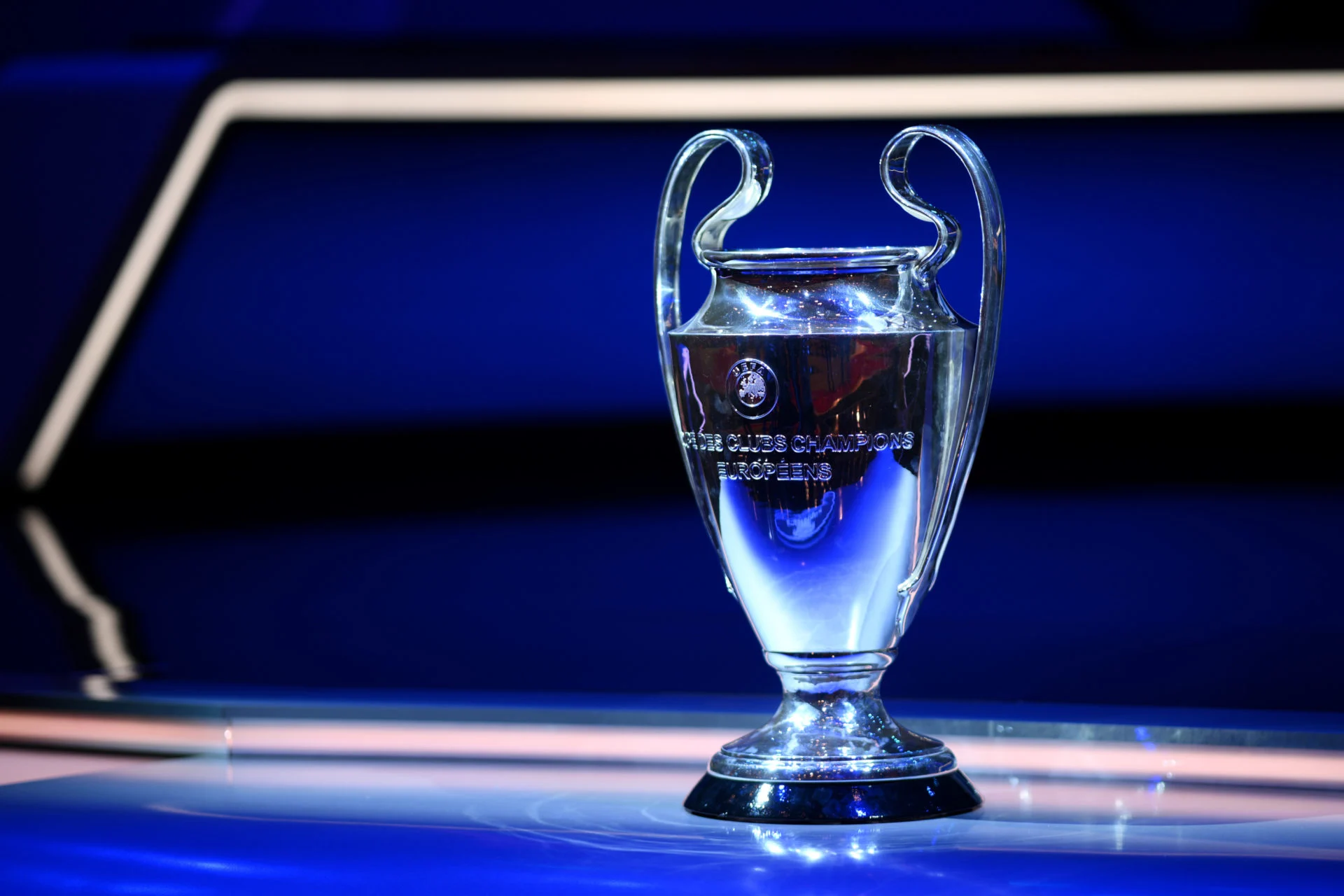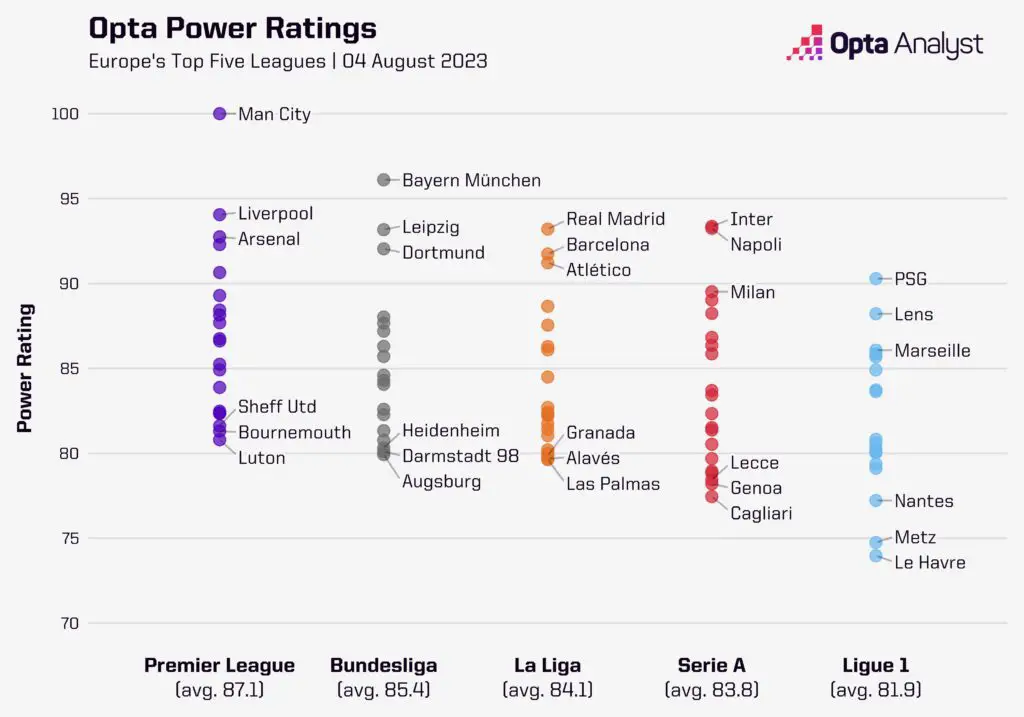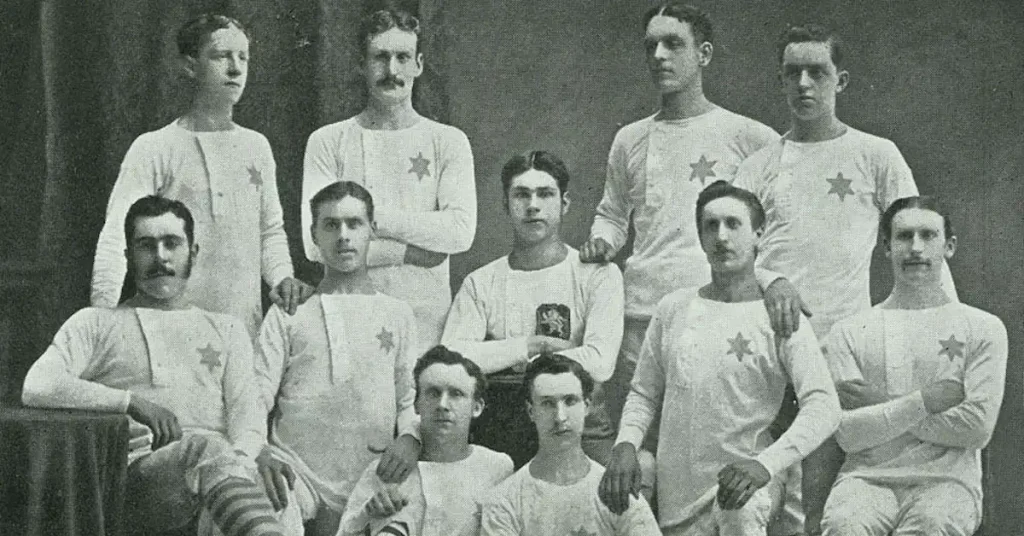Football is a fiercely competitive sport. Any little win a country or club can get over a compatriot is celebrated wildly, and these small victories can sometimes enter the truly pedantic.
While for the most part fans take pride and celebrate club and nation’s performances over their rivals, in a world of constant coverage and access to football everywhere, the argument of whose country has the better league dominates conversation online.
For years fans have passionately debated which leagues are the best in the world, the order of differing from person to person.
It’s become a thing of pride, to have your homeland’s top division within the best leagues in the world. Some fans get as heated over how good their country’s top-flight is, as they would over a poor decision against their team.
After more than a century of bickering over the topic, and no way to truly dispel ill-founded beliefs of lower-quality leagues being better than they are, the OPTA Power Rankings give us a definitive answer to the respective quality of every well-established professional football league.
But before we dive into which division is where, and discuss some of the more surprising entries, we have to understand how the rankings work.
What are the OPTA Power Rankings?
According to the official description of how the OPTA Power Rankings work, it is a “global team ranking system that assigns an ability score to nearly 13,500 domestic football teams on a scale between zero and 100, where zero is the worst-ranked team in the world and 100 is the best team in the world.”
By simply measuring the power rankings of each individual team in a league, it becomes a simple matter of working out the mean rating of each league to find the average power ranking score of teams in the league.
Once you have this average, you have the league’s objective ranking, which can answer once and for all which competitions are more prestigious.
But you may ask, “What actually decides which teams get a higher rating?”
How Do The Opta Power Rankings Work?

Essentially, The Elo algorithm has analysed over 2,500,000 match results since 1990 and assigns Elo points to a team per game played. The winning team takes Elo points off of the losing team, with the amount determined by their current world ranking on the Elo system.
If two teams ranked 50 play each other, the winning side will gain 20 points, while the losing side loses 20 points as both are on the same level.
Elo rating updates on a game-by-game basis based on the likelihood of each team winning, based on their respective rankings and the actual outcome of the match.
OPTA explains it best:
“
- If the higher-rated team wins, fewer points will be exchanged.
- If the lower-rated team unexpectedly wins, more points will be exchanged.
- If the match ends in a draw, the lower-rated team will gain a lesser amount of points.
- The greater the margin of victory, the greater the number of points exchanged is.
- Remember whatever one team gains, the other team loses!”
You may have some doubts over the credibility of the system, but Elo is foolproof in that it is self-correcting in the long term.
See, if a team is ranked lower than it should be, it will earn more Elo each time it beats a higher team, rising up the ranks until they eventually earn much less Elo per game, which by that point will make them among the best teams in their league.
This is of course even better when accounting for continental competitions like the European or Asian Champions Leagues.
When teams play each other in these continental competitions, both the team and the league’s ability can be seen for what it truly is.
“A team will gain or lose points relative to their corresponding Elo rating until the ratings reflect their true strength. If a team is undervalued, they will gain more points in each game until their strength is accurately represented by the system.”
Now that’s explained, we can get to the big question.
What Are The World’s Top 20 Football Leagues?

In 6th place, however, is the Championship, England’s second tier. That may seem stupid; how can a league that doesn’t have European spots be in 6th place?
One of two rankings many will disagree with, the two main reasons for the Championship being so high are as follows: It’s somewhat common for Championship sides to beat Premier League sides in domestic cups. There are always a few shocks per season, Middlesbrough beat both Man United and Tottenham in the 21/22 season, which would have given them and the Championship a ratings boost.
Secondly, as the Premier League is the world’s top-ranked league by some margin, teams that are relegated from the Premier League will often sit around the 80 mark.
Having picked up a few good results against Premier League sides, they will likely have been favourites to lose in most games, so the losses barely hurt the side’s rank, while their limited wins would have bumped this rank up.
But this is true for all leagues and countries, the Championship really does have a shockingly high quality.
It’s the consistency across the board that makes it too high, we’ve seen back-to-back promotions from 3rd division sides that end up in the Prem, so few teams drop below the 72 mark.
While Porto or Benfica are much better sides than any Championship team, the bottom half of the Portuguese 1st division is worse than the bottom half of the Championship.
Consistency of stature is the most important factor.
If you’re sceptical, there are many examples of players excelling in the Dutch or Portuguese leagues for top-half sides, that flop in the Championship. It’s a seriously high-quality league nowadays.
You can see the top 20 below, but there is one more glaring surprise to discuss…
| Rank | League | Rating |
| 1 | English Premier League | 87.66 |
| 2 | German Bundesliga | 84.04 |
| 3 | Italian Serie A | 83.46 |
| 4 | Spanish La Liga | 83.43 |
| 5 | French Ligue 1 | 81.41 |
| 6 | English Championship | 78.58 |
| 7 | Dutch Eredivisie | 77.24 |
| 8 | Portuguese Primeira Liga | 77.20 |
| 9 | Belgian Pro League | 77.19 |
| 10 | Brazilian Serie A | 76.43 |
| 11 | Swiss Super League | 75.72 |
| 12 | Turkish Super Lig | 75.65 |
| 13 | Russian Premier Liga | 75.08 |
| 14 | Danish Superliga | 75.00 |
| 15 | MLS | 74.77 |
| 16 | Austrian Bundesliga | 74.76 |
| 17 | Spanish La Liga 2 | 74.42 |
| 18 | Polish Ekstraklasa | 73.88 |
| 19 | Argentine Liga Profesional | 73.66 |
| 20 | German 2. Bundesliga | 73.62 |
The MLS VS Saudi Pro League: Where is Saudi Arabia?

The Saudi Pro League isn’t even in the top 30, sitting, as of September 2023, in 36th.
So how on Earth, can a league with Neymar Cristiano Ronaldo, Karim Benzema and a host of former Top 5 League players not even make the top 20, let alone the top 30?
Well, the answer is surprisingly simple…
From a club perspective, Saudi’s best teams easily eclipse the MLS’. Al Hilal sit in 61st place, edging out Al Nassr, sitting at 80th place. Al Ittihad are the next highest out of both leagues, in 135th place.
Al Hilal and Al Nassr are comfortably the best out of both leagues, but that’s also part of the problem. The best MLS team is Los Angeles, who are ranked 138th in the world. When the two leagues are merged and ordered by Elo, you have to go down another 14 places from 3rd before you find another Saudi side.
This is where the 4 Saudi model of investing in 4 teams fails. While the MLS lacks standout superpowers, the quality is consistent throughout the league. Outside of the top 4 Saudi clubs, the quality is severely lacking in comparison to the MLS.
This a major issue: A big side only gets a decent jump in Elo by beating one of the other 3 big sides, with the 4 teams likely to trade Elo back and forth with each other.
This means it takes a lot of wins to increase their rankings. It would be like if Man City played Luton or Sheffield United every week. They’d gain about 5 points each time.
In the MLS however the quality is consistent, and all the teams are able to compete with one another, making games much more meaningful from a ratings perspective.
White Ronaldo may believe the league will become a superpower, but the truth is, it’ll never break into the top 10 until they spread the wealth between all of the teams.




